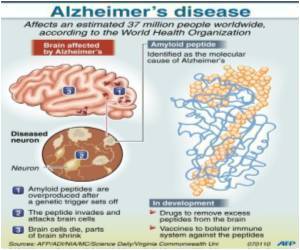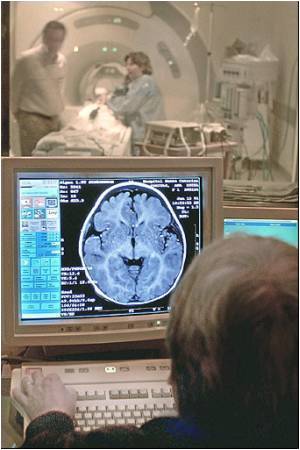
The team, led by Gang-Yu Liu, professor of chemistry, and Lee-Way Jin, associate professor of pathology and a researcher at the UC Davis Alzheimer's Disease Center, used a cutting-edge microscope to measure how cells respond to physical pressure.
The microscope, located at UC Davis' Spectral Imaging Facility, combines an atomic force microscope and a confocal microscope. It is one of a handful in the United States and one of the most advanced of its type, Liu said.
An atomic force microscope uses a fine needle to visualize the features of a surface with exquisite resolution and precision; it is used more often in materials science than in cellular biology.
A confocal microscope can view living cells in culture media and in three dimensions.
The team put a glass microbead on the tip of the AFM needle and used it to press down on living cells.
Advertisement
"This is a simple method for measuring the stiffness of a cell - like pushing down on a spring," said Liu.
Advertisement
Normal brain cells are the "squishiest" among the cell types they have tested with the technique, said Liu.
The cells readily deform under pressure, but recover. At the other end of the scale, skin cells (keratinocytes) are very stiff and resistant to pressure, but shatter under stress.
The findings are published this month in the Proceedings of the National Academy of Sciences.
Source-ANI













